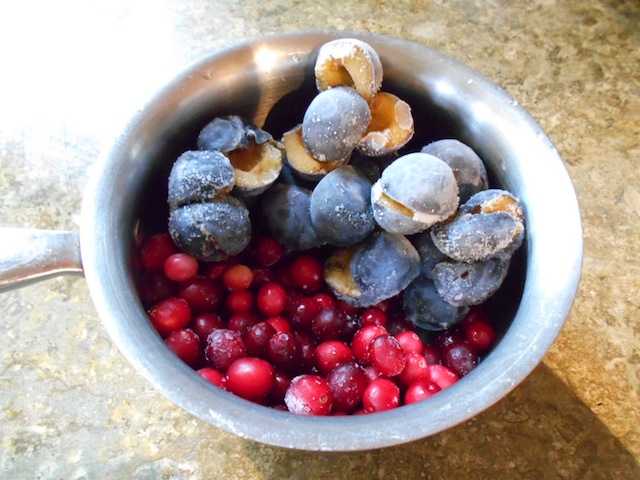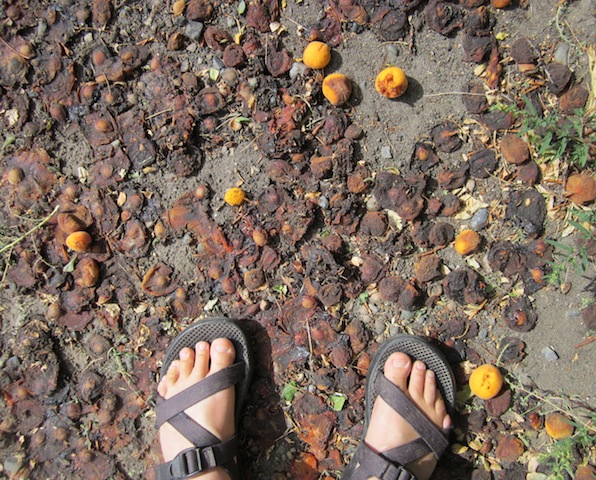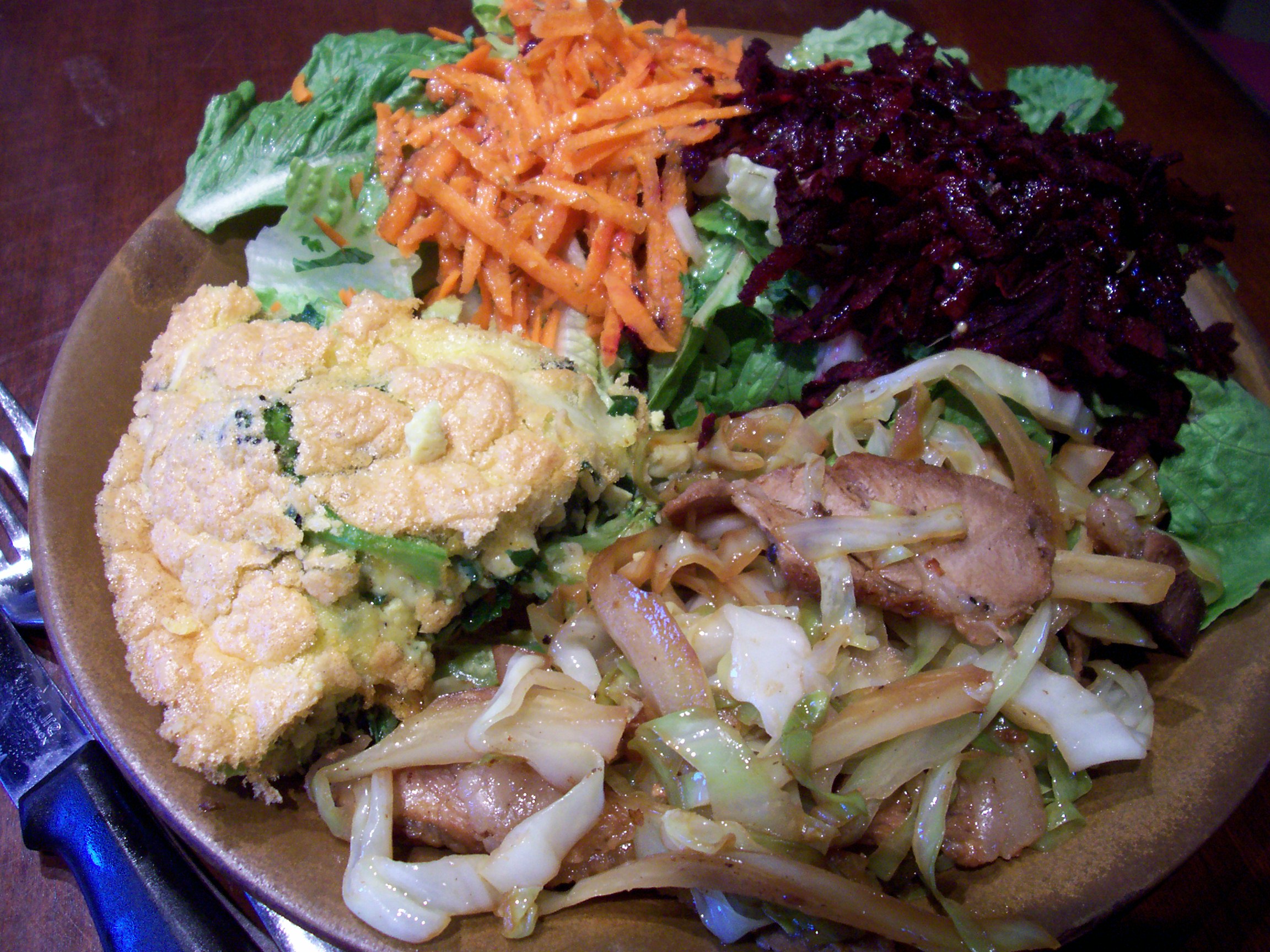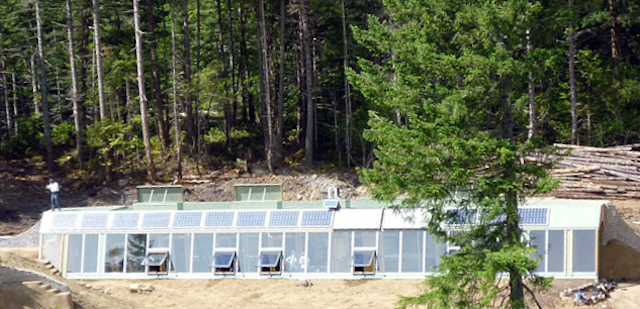
Here is an earthship being built near Lone Butt, BC. It would be great if government would change regulations to allow easier construction of sustainable housing. Photo from Biotecture.
At the beginning of this year I wrote Boxing Day: You Are What You Buy (Believe) and Dreaming In the New Year. As I have said before, if we are going to save ourselves and our children, we each have to make some big decisions about how we live our lives.
Every day we make a decision about the foods we eat and its source. This one action can have a profound impact on our lives and the world we share with others. People talk about “voting with your food dollar” which can be a powerful way to live your beliefs and in fact changes the world around you. Buying locally produced organic food, pasture based animals, and getting reacquainted with your kitchen will change your world. You will be healthier, your children will have a healthier future, and your local farmer and rancher will benefit from your financial support.
Another big area we can look at after dealing with our food is housing. I was listening to David Suzuki on CBC Radio. David Suzuki is putting on a ten part series called The Bottom Line. He was talking about Climate Change and what we can do about it. I found his solution sadly lacking in imagination. His solution was to have more government regulations and force people to behave in an enlightened way. He seems to distrust the wisdom of his neighbors to do the right thing. Of course, sometimes it is the state that does not allow us to do the right thing even though we might like to as individuals.
There are a number experimental housing options that could potentially help us save the world by reducing our carbon footprint. But building bylaws and regulations will not allow these houses to be built. The Earthship is one such solution but you would have a tough time getting your local planning department to accept your plans to build a house that will collect its own water, make its own power, heat and cool itself, and process its own waste. The house will even grow your food all year round and it is made out of garbage that will otherwise end up in the landfill. Sounds wonderful doesn’t it?
Unfortunately, to build this house you will need an “overseeing professional” such as an engineer, assuming you can even find one that will take on your project. You will have extra costs and frustrations. It is always easier for the officials to say no to a request. Officials are not known for sticking out their necks for the little guy.
So I say to David Suzuki maybe less state control rather than more regulation will get us going in the direction we need to go as a society. I know a great number of people willing to make big changes in their lives if we were allowed to do so. I know I have extra raw milk I could sell to interested neighbors. I have a chicken or two I could slaughter in my kitchen sink for a friend. There is lots of food available but the state’s system of control stymie these simple activities and turns citizens into criminals. Of course, their argument is that it is for your own good because you are too ignorant to design your own food system.
I would like to build a zero energy house on a property where I could grow my own food and sell any extra food to my community. Earthships intrigue me. But the reality is these buildings need to be built near cities and towns so the garbage does not have to be shipped long distances into the woods. Unfortunately, the only place these building can be built would be in the bush, far away from the watchful eyes of the officials. (If you are out in the bush, using reinforced concrete or compressed earth blocks instead of the tire walls makes more sense.)
In my more cynical moments, I have little hope that we can free ourselves from the tyranny of the state. I fear that my children will walk in a world with even more restrictions from Above. I would like to see more freedom for the individual to solve their own problems without the state interfering with its steel fist and jack boots. Why can’t the state allow me to live in a garbage and mud house, if I so desire? Why can’t I grow and sell my food to my neighbors without restriction? I do not see these actions as criminal, but they have become so. I do not know if earthships are the answer to Climate Change or housing the poor, but these buildings are a step in the right direction.
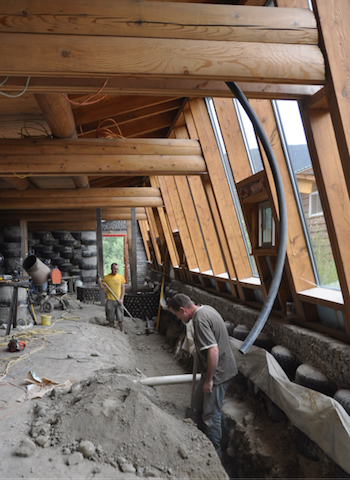
This is inside the earthship being built in Darfield, BC. Photo by Sandra Burkholder.
If you would like to look at more examples of zero energy homes such as straw bale and rammed earth houses, here are just a few Architectural websites about straw bale construction and compressed earth construction. There is an earthship being built in Darfield, BC.
